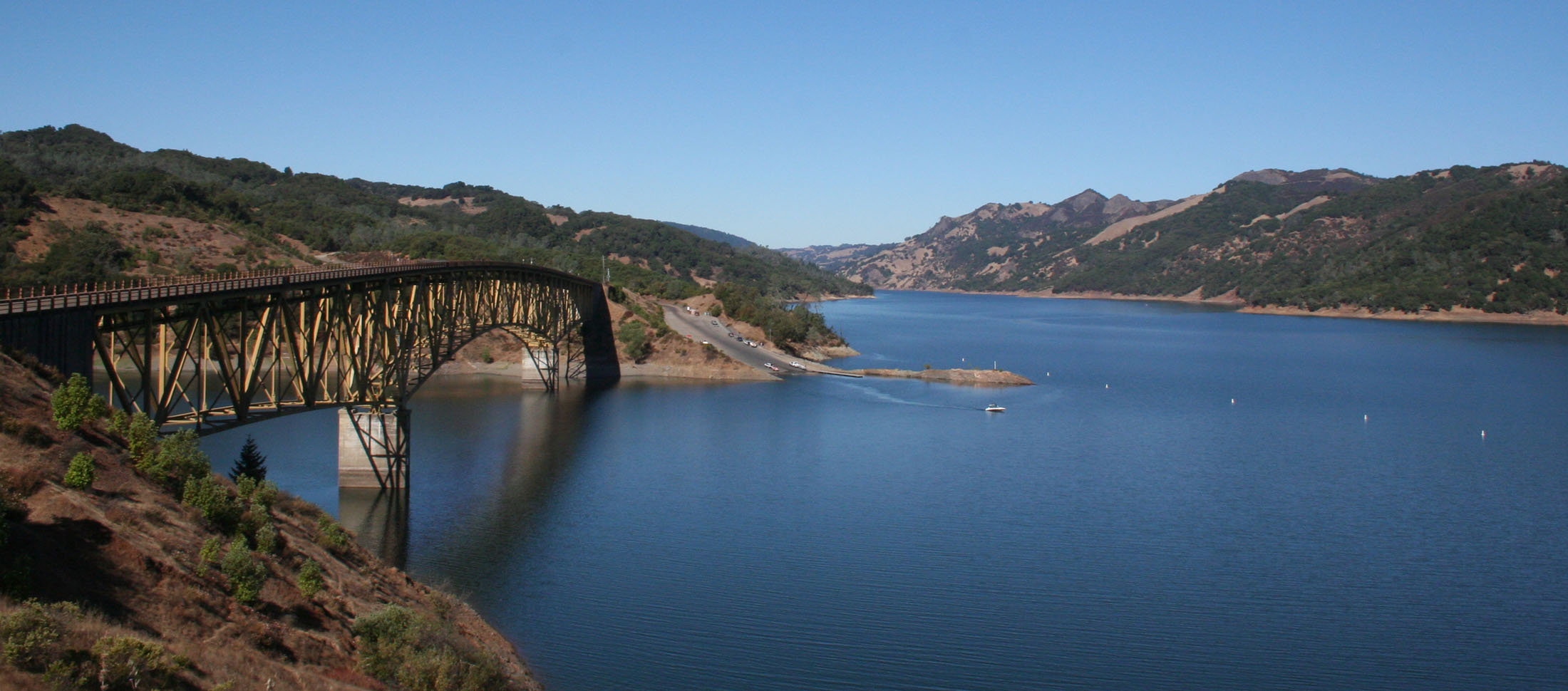About Lake Sonoma
Lake Sonoma Recreational Area is located in western Sonoma County, near the communities of Healdsburg, Cloverdale and Geyserville in Northern California. It is operated by the U.S. Army Corps of Engineers and, through management of the Sonoma County Water Agency, is the main source of water for more than 600,000 residents and businesses in the North Bay.
The Friends of Lake Sonoma (FOLS) is a non-profit support group that assists the Corps with its educational and visitor services programs. Due to declining federal budgets, the role of FOLS is rapidly increasing as the demand for volunteers to take up some of the slack continues to grow.
As the largest freshwater recreational area in Sonoma County, Lake Sonoma contributes more than $12 million annually to the local economy. It also plays a pivotal role in the reproduction of threatened and endangered species of trout and salmon. It is home to the Congressman Don Clausen Fish Hatchery and the Milt Brandt Visitors Center, which currently is open to the public only through the efforts of the Friends of Lake Sonoma.
Lake Sonoma offers 40 miles of pristine trails with panoramic views for hikers, mountain bikers and horseback riders. The park boasts an archery range and a disc golf course, plus a fenced-in dog park. Drive-in campsites are available for RVs and tent campers, and there are also primitive boat-in or hike-in campsites. Boats can be launched at two public sites -- one near the dam and another at the Yorty Creek Recreation Area near Cloverdale. The Lake Sonoma Marina offers a boat ramp, full-service marina, boat slips, rentals and a store.
There are two main picnic areas -- the Warm Springs Recreation Area, located at the base of the dam across from the Milt Brandt Visitors Center, and the Yorty Creek Recreation Area.
Hunting at Lake Sonoma is strictly controlled. To help control the burgeoning population of feral pigs, the Friends of Lake Sonoma offers archery and crossbow pig hunting to licensed hunters for a fee from late November through late March. Depending on the deer population, FOLS also offers guided deer hunts during deer hunting season in the fall, with specific limitations on the number of bucks that can be taken during a season.
Fishing is phenomenal at Lake Sonoma. Submerged trees left after the filling of Lake Sonoma provide an excellent underwater habitat for a wide variety of game fish, including bass, perch, channel catfish, sunfish and bluegill.
When full, Lake Sonoma has more than 2,700 acres of surface water, making it a boater's paradise Several areas of the lake are designated for water skiing and some areas are no wake.
Lake Sonoma Factoids
- When full, the surface of Lake Sonoma is more than 2,700 acres.
- Lake Sonoma has more than 50 miles of coastline and 40 miles of trails.
- The Congressman Don Clausen Fish Hatchery is California's most modern.
- More than 4,000 school children visit the fish hatchery each year to learn about conservation, the environment and efforts to save threatened and endangered species of trout and salmon.
- Each year, the Friends of Lake Sonoma sponsors the Lake Sonoma Steelhead Festival, held the first Saturday following the Super Bowl in early February. The festival coincides with the return of Steelhead Trout to the hatchery, where they spawn a new generation of fish.
- Prior to the building of Warm Springs Dam and the formation of Lake Sonoma, the area was inhabited by generations of Dry Creek and Cloverdale Pomo Indians, plus Anglo and Mexican farmers and ranchers.
- Many old homesites -- and the historic Skaggs Springs Resort -- sit at the bottom of Lake Sonoma, now providing safe harbor for fish.
- The area now covered by Lake Sonoma was once mined for quicksilver (mercury), hence the name "Quicksilver Trail."
